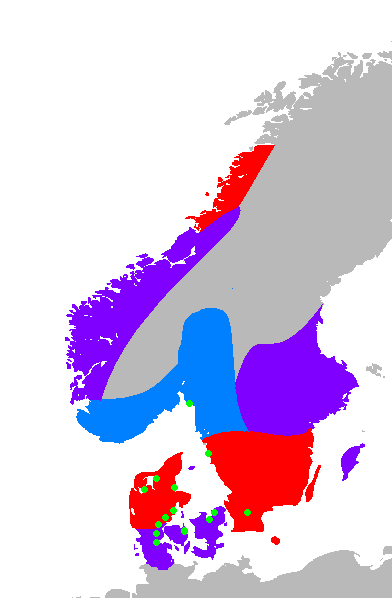Did not expect the Abrahamic religions originating from Egyptian monotheism (let alone that Egyptian monotheism existed, surprised).
How come? Might even be a bit far fetched, but the truly amazing historic curiosity is actually:
https://en.wikipedia.org/wiki/History_of_Greece
"Archaic Greece was the period in Greek history lasting from the eighth century BC to the second Persian invasion of Greece in 480 BC,[1] following the Greek Dark Ages and succeeded by the Classical period. During this period, Greeks settled across the Mediterranean and Black sea, as far as Marseilles in the west and Trapezus (Trebizond) in the east; and by the end of the archaic period were part of a trade network which spanned the entire Mediterranean."
"
Early Demotic (often referred to by the German term Frühdemotisch) developed in Lower Egypt during the later part of the Twenty-fifth Dynasty, particularly found on steles from the Serapeum at Saqqara. It is generally dated between 650 and 400 BCE, as most texts written in Early Demotic are dated to the Twenty-sixth Dynasty and the subsequent rule as a satrapy of the Achaemenid Empire, which was known as the Twenty-seventh Dynasty. After the reunification of Egypt under Psamtik I, Demotic replaced Abnormal Hieratic in Upper Egypt, particularly during the reign of Amasis II, when it became the official administrative and legal script. During this period, Demotic was used only for administrative, legal, and commercial texts, while hieroglyphs and hieratic were reserved for religious texts and literature.
"
So how old is the hieratic script? (phonetic used by scholars).
"Hieratic developed as a cursive form of hieroglyphic script in the Naqada III period, roughly 3200–3000 BCE."
It becomes quickly controversial with larger philosophical shifts and mixing of languages and religious systems.
And there are many references to both Eliopolis and Alexandria from many perspectives:
"
During the Amarna Period of Dynasty XVIII, Pharaoh Akhenaten introduced a kind of henotheistic worship of Aten, the deified solar disc. As part of his construction projects, he built a Heliopolitan temple named "Elevating Aten" (Wṯs I͗tn or Wetjes Atum), whose stones can still be seen in some of the gates of Cairo's medieval city wall. The cult of the Mnevis bull, another embodiment of the Sun, had its altar here as well. Their personal formal burial ground was situated north of the city.
The store-city Pithom is mentioned once in the Hebrew Bible (Exodus 1:11), and according to one theory, this was Heliopolis.
"
Notice we have Akhenaten again here, and something about a bull diety/idol as competition to sun worship.
But that seems to lean more towards a mythical approach (eg. written text covering a personification of specific traits, eg. strength/power/... for Hercules/Thor).
Right, and how different are Hercules and the 12 challenges that much different from the moral hero jesus and his 12 discipilines, can one say the structure is simmilar?
Father, son and the holy ghost. Odin, Thor and Baldur. And the oldest systems that follows this pattern is from Naqdah III together with hieratic script.
Only problem seems to be when physics gets mixed in under the delusion of improving or simplifying things.
This being said, there are very few systems that are rather universal, where each one seem to focus on one or the other and have aspects of the rest.
In Norse mythos, trinity seems to be clearly defined where the sun chariot is in focus. This has comparison to dragon kring from China.
So by entertaining the idea of being Thor or the Dragon King playfully, there is alot of engangement to he bad that is better than cowboys and indians.
Greek and Roman in particular is perhaps especially messy as trying to deal with all of it at the same time.
Psychology is important in philosophy and literature when it comes to entertainment and culture especially.
So getting one thing psychologically extremely right works also extremely well.
Thalamus, corpus callosum, pons.
frontal lobes, cerebrum, parietal lobes.
temporal lobes, cerebellum, frontal pole.
Anyways, natural language isn't an exact science, but no denying adherence to biological and cognitive processes.
12+1 6+1 2+1 8+2
"don't personify too much!", "don't idolize!" are common cries from dying civilisations and cultures for having too many assburgers trying to make it real or enforced literally.
This is a perfectly valid propositions and reasoning.



